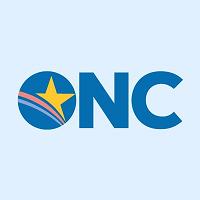 Insights from a National Survey
Insights from a National Survey
By Chelsea Richwine, ONC
Twitter: @ONC_HealthIT
Patients have a right of access to their health information under the Health Insurance Portability and Accountability Act (HIPAA) Privacy Rule. Recent policy efforts aim to simplify and increase patient access to electronic health information (EHI), as easy access to health information enables patients to monitor health conditions, follow treatment plans, and find and fix medical record discrepancies. Patient access also plays a major role in promoting patient-centered care by enabling individuals to make more informed decisions about their health.
Enabling patient access through health IT
Historically, patient access to EHI has largely occurred through patient portals, which enable patients to access their health information online. In 2019, about 60% of office-based physicians and nearly all hospitals (97%) enabled patients to view their EHI using a patient portal. However, not all patients know about the availability of this access option, and at times need to be provided account information or request account creation to do so. This is also true for more modern methods of accessing EHI since portal credentials are typically required to authorize third-party health apps to receive patient data. As of 2020, about six in 10 individuals nationwide reported being offered a patient portal and nearly 40% reported accessing it at least once in the past year. This marks significant progress from 2014 when only 42% of individuals were offered portal access and 25% logged in. While overall growth in patient portal engagement is encouraging, prior studies have identified persistent disparities in patients’ access and use of online medical records, including racial and ethnic disparities in patients being offered access to their portal – an important precursor to access and use.
Disparities in patient access
To understand whether these racial and ethnic disparities persist, a recent ONC study leveraged the latest available data from the Health Information National Trends Survey to identify racial and ethnic disparities in patient portal offers, access, and use. The study also examined the role of providers in facilitating access to EHI by offering patient portals and encouraging their use.
Overall, we found that in 2019 and 2020, Black and Hispanic individuals were offered and accessed patient portals at significantly lower rates than white individuals. Even after accounting for other factors that may influence patient engagement – such as an individual’s age, gender, education, or health status – racial and ethnic disparities in patient portal offers and access persisted: Black and Hispanic individuals were significantly less likely to report being offered and subsequently accessing their portal compared to their white counterparts. However, when we examined access and use among those who reported being offered a portal, disparities largely diminished – which suggests differences in access were likely driven by disparities in being offered a portal.
Percent of Individuals who were Offered and Accessed a Patient Portal in 2019-2020, by Race/Ethnicity

Source: HINTS 5, Cycle 3 (2019) and Cycle 4 (2020).
Moreover, we found that individuals who were offered a patient portal and encouraged by their health care provider to use it were more likely to access it. The full study further delves into the effect of provider encouragement among different racial/ethnic groups and explores reasons for non-use among those who were offered a portal but did not use it. Taken together, our findings point to the important role of health care providers in increasing access to EHI by offering portals and encouraging their use.
Building equity into design
To reap the full benefits of polices aimed at increasing patient access to EHI, it is critical to foster practices that lead to equitable access and use. This includes establishing best practices for information sharing, addressing access-related barriers to use, and alleviating patient concerns around the privacy and security of EHI – which continue to play a role in shaping individual preferences around accessing their EHI via patient portals and other modern methods.
To help advance patient access to EHI, the ONC Cures Act Final Rule called on developers of certified health IT to adopt standards-based application programming interfaces (APIs) that enable patients to access their EHI using health apps via their smartphone or other methods. This marks an important step towards increasing patient access to EHI as studies have shown that Black and Hispanic portal users are more likely to use mobile devices to access EHI, and standard, non-proprietary APIs offer the opportunity for patients to use a wider selection of apps to access and manage their information . However, since portal access remains a prerequisite for accessing EHI through a health app, disparities in offers can have downstream implications for patient access via third party apps. Therefore, eliminating racial and ethnic disparities in patient portal offers and building equity into design is critical to ensuring equitable access and use of health apps. Systematic, organization-level changes (e.g., universal access policies), technological enhancements (e.g., improving the language accessibility of portals), and educational and training materials that target both patients and providers can help improve accessibility and facilitate equitable use.
Additional Resources
Patient Access Resources for Individuals: Get it, Check it, Use it!
Patient Access Resources for Providers
Patient Access Resources for Developers, & EHR Vendors
This article was originally published on the Health IT Buzz and is syndicated here with permission.
